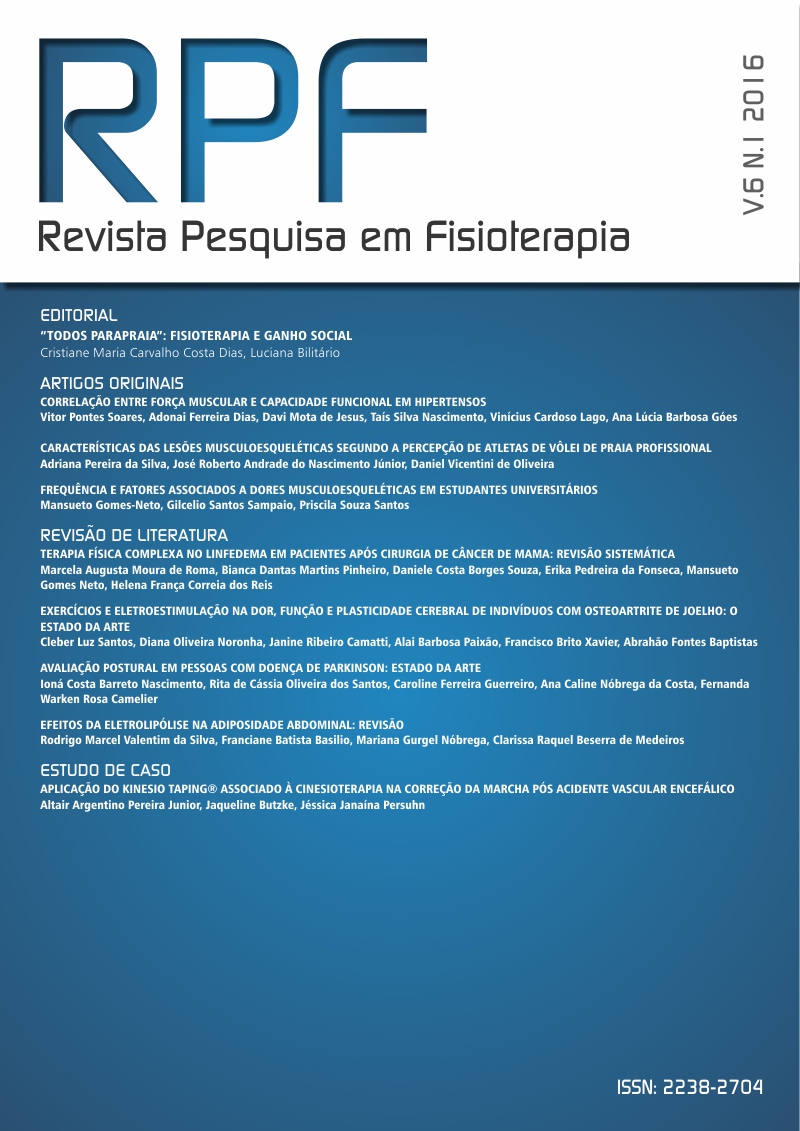CORRELATION BETWEEN MUSCLE STRENGHT AND FUNCTIONAL CAPACITY IN HYPERTENSIVE INDIVIDUALS
DOI:
https://doi.org/10.17267/2238-2704rpf.v6i1.796Keywords:
Hypertension, Muscle strenght, Functional capacityAbstract
Introduction: Hypertension is a highly prevalent clinical condition that also constitutes a major risk factor in the onset of cardiovascular and cerebrovascular diseases. One of the hemodynamic effects is the reduction of energy intake by the muscles due to impaired perfusion, causing reduction in muscle strength (MS). MS is directly correlated to functional capacity (FC). Objective: To determine the association between muscle strength and functional capacity in hypertensive individuals. Methods: Cross-sectional study, hypertensive subjects (PAS?140mmHg and / or PAD?90mmHg), both sexes. FM was assessed by hold Palmar Force (PPF) with Dynamometer Jamar®, according to the American Society of Hand Therapists’ protocol (ASHT). The FC was evaluated from the distance covered (DC) in the six-minute walk test (6MWT). To assess the association between FPP and DP the Spearman correlation test was used, with a 5% significance level. This project was approved by the BAHIANA’s Ethics Committee under the number 413,317, and the CAAE number 16952113.0000.5544. Results: Among the 29 study participants, the mean age was 47.6 ± 7.6 years, 72.4% were female, with 12 or more years of education (55.2%), who had never smoked (75%), and with 77.80% of them on medication. Average PAS was 125.56 ± 18,89mmHg and DBP 82.15 ± 12,58mmHg. The measure of correlation between FPP and RPP was moderate (R = 0.45, p <0.05). Conclusion:There is a moderate positive correlation between muscle strength and the distance walked during the 6MWT in hypertensive individuals. However, it is necessary to assess the role of high blood pressure, age, gender and height both in muscle strength and the distance walked to better understand this interaction.



